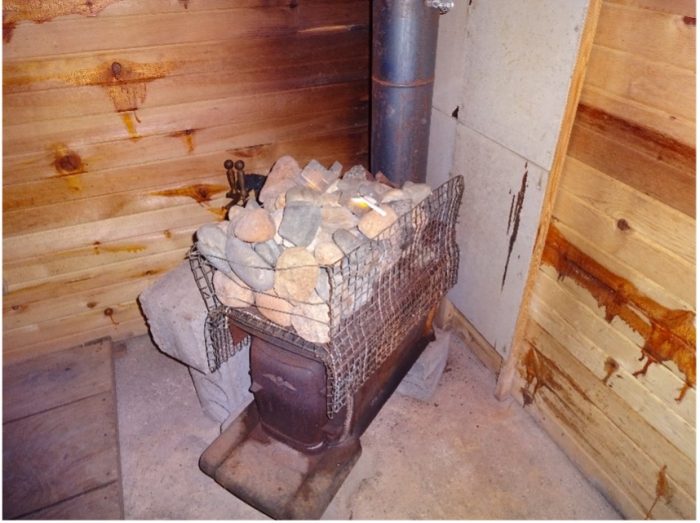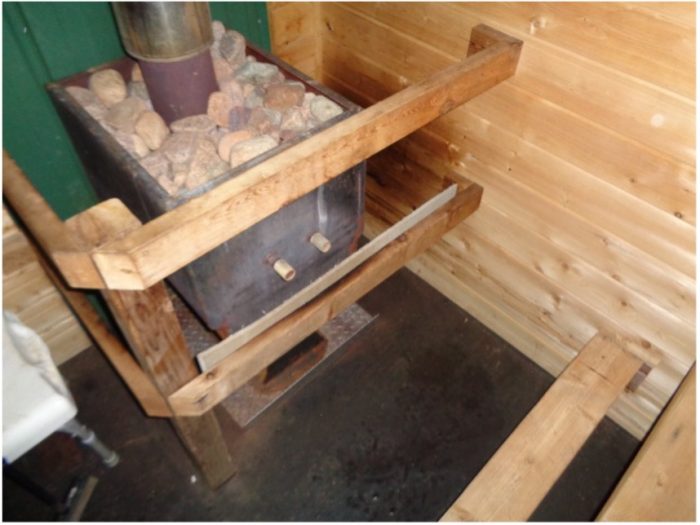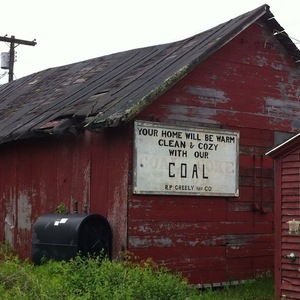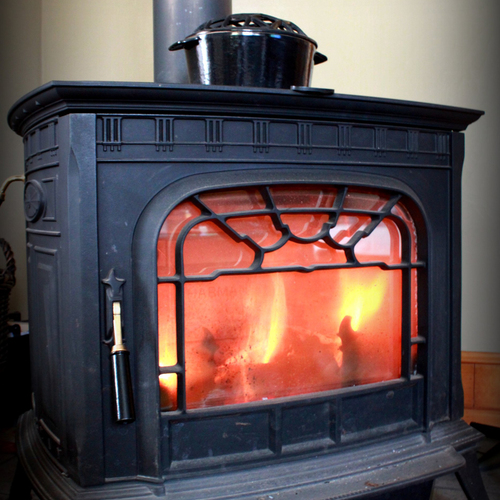
I used to perform risk assessment inspections for a couple small, local mutual insurance companies. These companies would insure properties that were considered “high risk.” Most were rural, some were accessible only by boat, ATV, or snowmobile and they were often a long way from the nearest fire department. Many had solid fuel–burning appliances, usually a woodstove or fireplace. Part of my job was to ensure the woodstove or fireplace had proper clearances to combustibles, proper floor protection, and that the stovepipe and chimney systems met the requirements of the manufacturer and/or code. Most installations were safe, but occasionally, I would find a home in danger of burning down.
The lead photo is one of those homes. The wrong type of chimney system was used for a central ducted wood-burning furnace. If the siding wasn’t on fire at some point, it was very close. The homeowner must have realized the error and installed a new Class A chimney system before my inspection.
Fireplaces and woodstoves
Before I get into what pyrolysis is, I’ll give a quick review of the parts and pieces of a solid fuel–burning appliance—specifically a fireplace or woodstove.
A fireplace can be masonry or factory-built metal insert, usually, but not always constructed into or in front of an exterior wall. A woodstove is a little different; these wood-burning appliances are usually freestanding and mostly factory-built with an Underwriters Laboratories (UL)—or other testing organization—listing, meaning the appliance has been tested and found safe if installed per the manufacturer’s directions. I have seen barrel and home-built woodstoves, which are not UL-listed and require more clearance to combustibles. Some insurance companies will not accept non-UL-listed burning appliances.
A chimney is a passageway where the flue gasses flow to exit the structure. The chimney system for a fireplace will typically be either masonry or a Class A, factory-built double- or triple-wall metal system connected directly to the fireplace. Each of these chimney systems have clearances to wood building materials: 1 in. for the masonry chimney, 2 in. for the Class A metal chimney.

This freestanding woodstove has a stovepipe that connects to a Class A chimney system. This installation was not approved; the stovepipe is galvanized ductwork not approved for this application.
The chimney system for a freestanding woodstove will again be either masonry or a factory-built Class A metal system. The difference is there is often a different pipe used to connect the woodstove to the chimney; this is called the stovepipe. A stovepipe is a single-wall, 24-gauge or heavier blue or black steel pipe. The surface temperature of these pipes becomes much hotter than the chimney systems and need a greater clearance to a combustible surface. A stovepipe can connect to either a Class A or masonry chimney system. The required clearance from the stovepipe to a combustible wall or ceiling is 18 in. There are approved ways to reduce this clearance using heat shields of different materials. Drywall attached directly to wood framing is not considered a heat shield, the 18-in. stovepipe clearance will be required with this common wall and ceiling assembly.
Potential for pyrolysis
Pyrolysis is defined as the chemical decomposition of wood or coal by the application of heat alone in the absence of oxygen. In short, it is the repeated heating of wood resulting in its changed chemistry and ignition temperature. Typically, this process happens over a long period of time and includes many cycles of heating and cooling at temperatures as low as 200°F.

The above photo shows where someone modified a standard freestanding woodstove and turned it into a sauna stove. The woodstove is not UL-listed, meaning the clearance from the stove to any combustible surface becomes 36 in. With this corner installation, the distance to either wall would be 36 in. from the back corners of the stove. The stovepipe minimum clearance in this case would be 18 in. The discoloration of the wood paneling behind the stove is evidence of pyrolysis. There is imminent danger of the wood combusting without an open flame simply because a certain temperature of the wood paneling is reached.

This sauna woodstove shows evidence of pyrolysis too. The discoloration to the right of the stove could combust without an open flame. Combustion occurred on the lower wood railing; the owner was probably using the sauna stove when the fire started. They tried to prevent the event from happening again by placing a protective material between the stove and rail.
(Neither of these woodstove installations were approved, which affected the homeowner’s insurance policy.)
Clearance to combustibles isn’t limited to woodstove and fireplace installations. I’ve heard of fuel oil heating devices not operating correctly and achieving flue temperatures of nearly 1000°F. Natural drafting appliances using B-vent chimney systems can also produce some heat and have requirements for clearance to combustibles. Though it’s less common, the risk of pyrolysis is still a possibility with lower temperature heating systems.
Recently, there’s been a spike in energy costs. In my market, that usually means people will be looking for less expensive ways to stay warm during the heating season. Wood heat in an area with an abundance of firewood is one of those options. High-temperature events that occur during the normal operation of some space-heating equipment can affect individual components of the building assemblies. We’ve known of these risks for decades, but I still saw plenty of poorly installed fireplaces and woodstoves when I was inspecting. Pyrolysis is just one of the fire risks associated with solid fuel–burning appliances. Make sure installations are correct and operation follows safe practices. Someone’s life could depend on it.
_______________________________________________________________________
Randy Williams is a builder and energy rater based in Grand Rapids, Minnesota. Photos courtesy of author.
Weekly Newsletter
Get building science and energy efficiency advice, plus special offers, in your inbox.















0 Comments
Log in or create an account to post a comment.
Sign up Log in